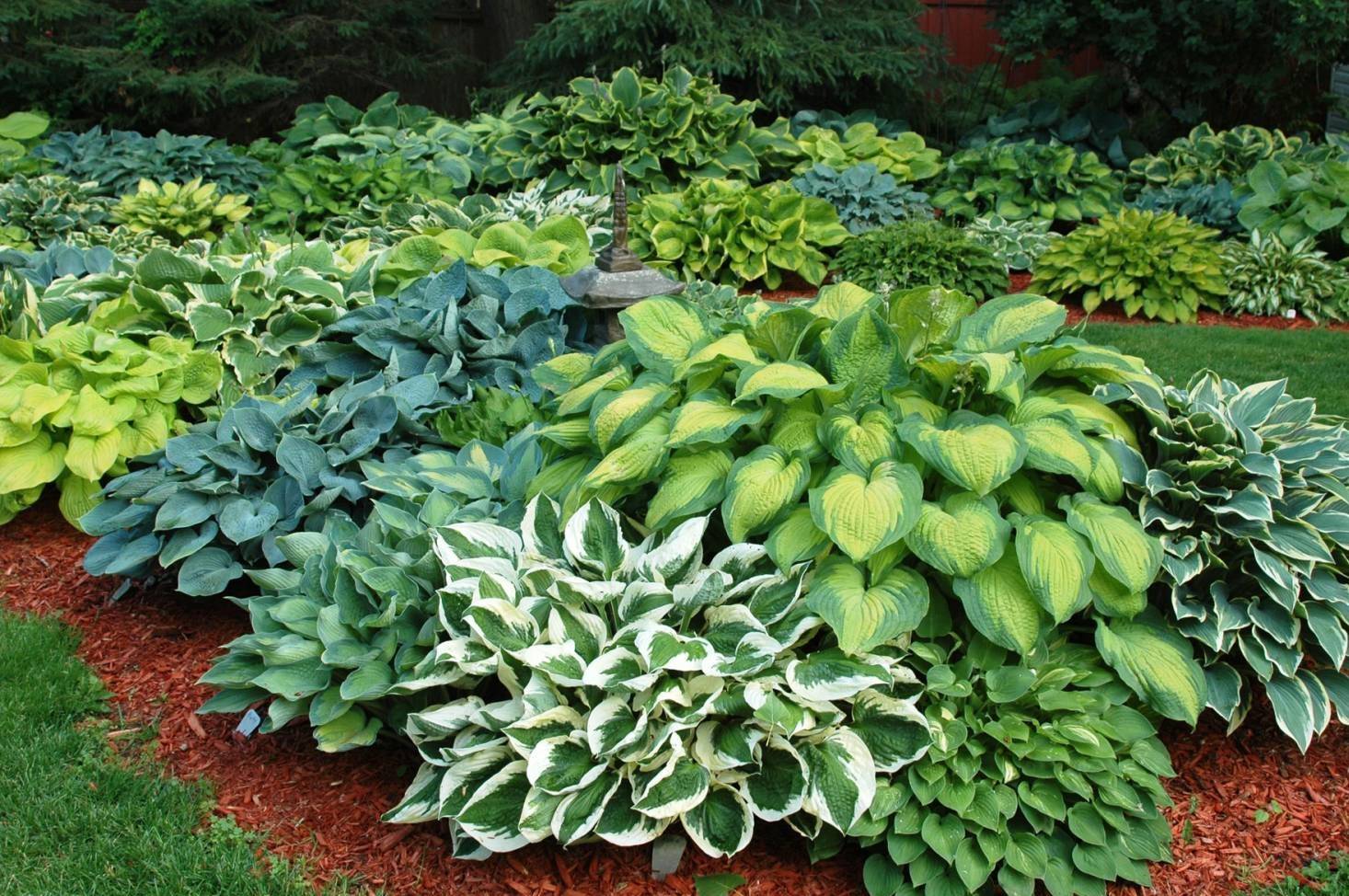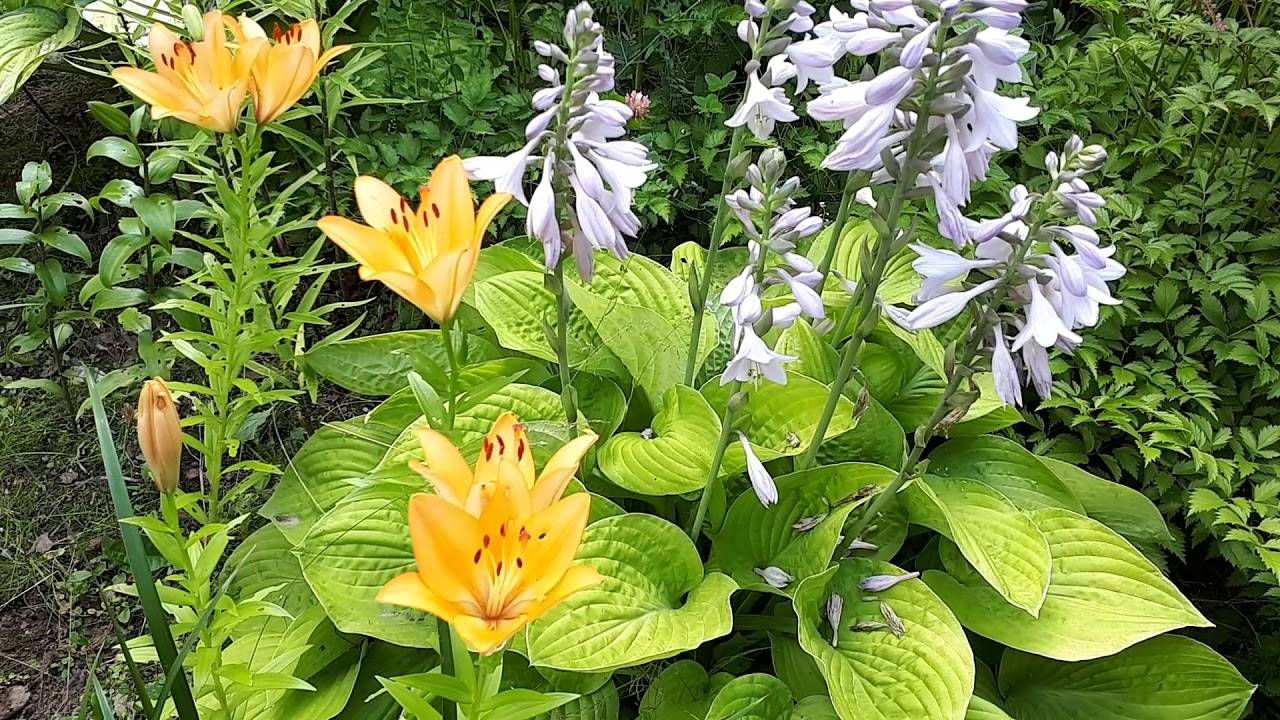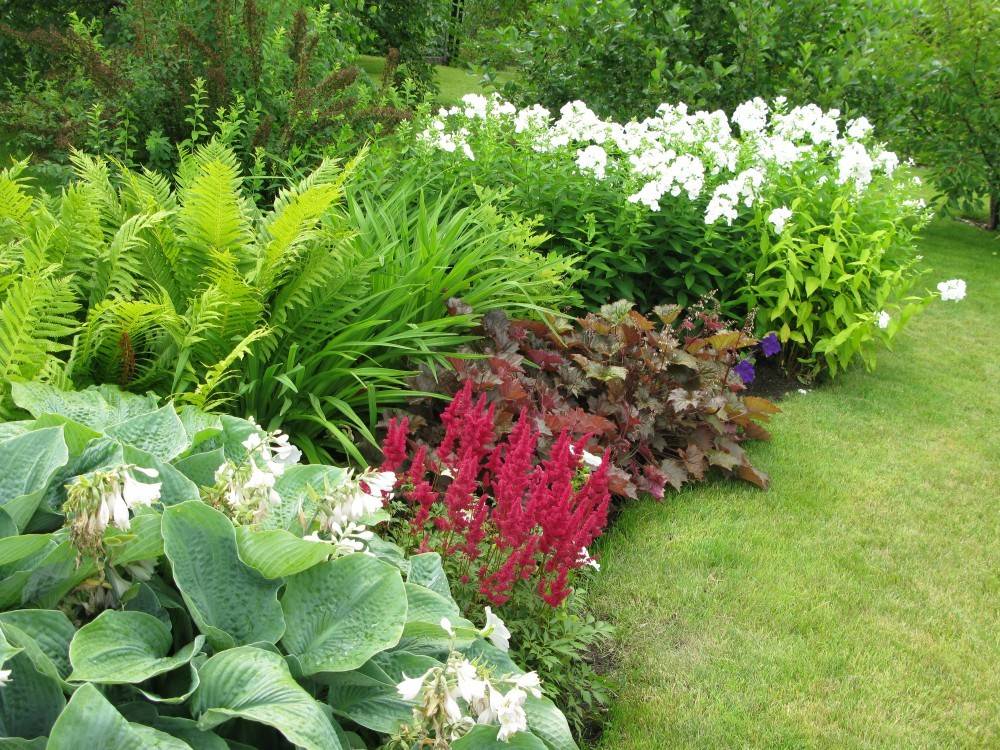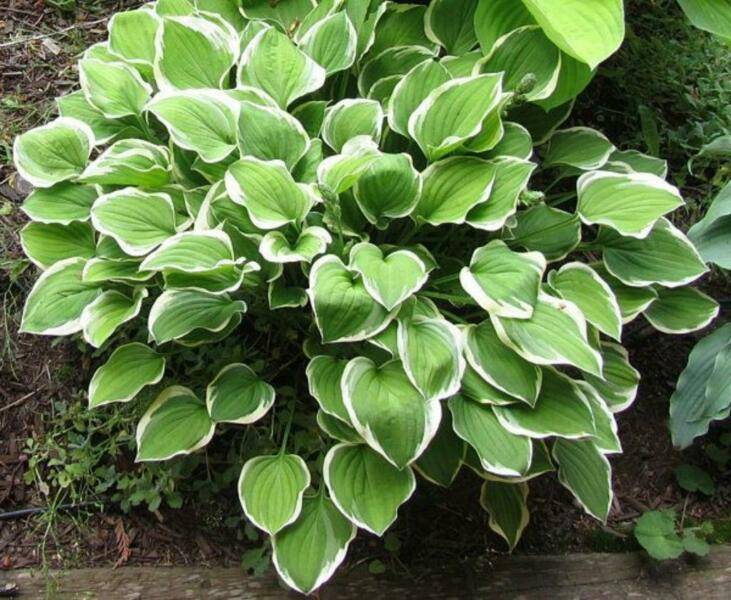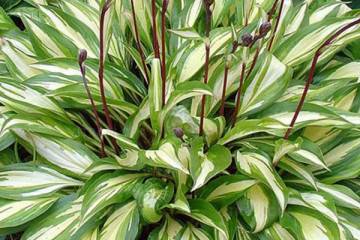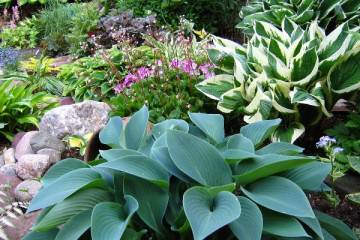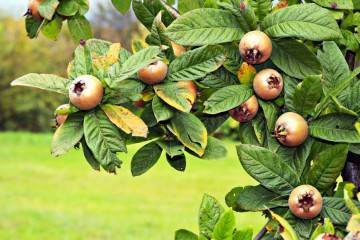Garden Hosts - Landscape Tricks
Content:
The most beautiful plant native to Asia has more than 50 species and about 700 varieties. These are the hosts in the garden, landscape tricks for the use of which are widespread. To decorate summer cottages, culture is used everywhere, except for the territory of permafrost. Even using only hosts, or rather several varieties, it is possible to implement unique landscape solutions. If other plants are used in the compositions, then there will be no number of options.
How beautiful to plant hosts on the site
Hosts can decorate any part of the garden, but remember, they love shady places (the ground does not matter). This means that shade-loving plants should be planted in their neighbors. It is important to take into account the undesirability of frequent transplants in breeding. But in order to choose the optimal place, it is recommended to experiment with young plants, that is, plant them in different areas, and leave them permanently where they grow better. In the future, it is advisable not to transplant the bush for up to 10 years.
What to plant next to the host
Many ornamental crops can be grown near the host.
The most common ones are:
- roses;
- daylilies;
- conifers;
- fern;
- astilba;
- rhododendron;
- tradescantia;
- iris.
Low-growing species will look charming with small flowers such as pansies and primroses. Next to large bushes will be appropriate:
- geranium;
- pion;
- geychera;
- phlox, etc.
Companions are also selected depending on the color of the leaves. For example, a hosta with yellow leaves looks organically with red flowers, and white ones are suitable for blue bushes. Green leaves will blend in with any shade of flowers.
What else can be planted with hosts is a hydrangea. She is an amazing partner for carved bushes. Both crops have large leaves. The correct selection of varieties can make the transition from one plant to another almost invisible. The bunches of hydrangea will appear to grow right from the middle of the hosta bush.
Flowerbed with hosts and daylilies
Very beautiful combinations are obtained from hosts and lilies. Given the high growth of daylilies, any type of culture can be planted next to them. To get a beautiful composition, there are some tips:
- if the lily flower has a yellow core (and shades of yellow), the host needs a yellow-leaved one;
- hosts with any leaf colors are suitable for the green center of the bud.
Flowerbed with phloxes, geyhers and hosts
You can always choose phlox for a tandem, because the colors of flower brushes are very diverse. There will be many options for compositions. In addition, phlox stems are perfectly matched to medium-sized and tall host species in terms of stem height. Behind the dense crown of the latter, the bare basal part of the phlox stems is not visible.
As for heuchera, this plant is distinguished by a wide variety of foliage colors. Rather, the stems of the same bush are covered with colorful leaves. Not only are they different in shade, they are also patterned. Their colors change during the season from yellow to dark steel. Heuchera flowers are almost white, therefore they are combined with any kind of host.
In general, it turns out that phloxes will delight with long flowering, heuchera will make the transition harmonious and cover the bald spots in the flower garden.
Hosta in landscape design
These green bushes are irreplaceable in landscape design. Their main quality is the freshness of the leaves throughout the growing season. They will even leave under the snow in their outfit (the greens are left to protect the root system from frost).
The combination with any decorative cultures is also important. Can be used as a central figure (especially tall ones) or as a frame for a flower garden. In this case, plants with a bare lower part of the stem, for example, the same phlox, especially benefit. The dense foliage of the culture well masks the faded or wilted plants of the composition.
As a central figure, crop can serve as a winning backdrop for unsightly plants. Moreover, all other components of the composition are selected in combination with the host.
Over the years of using culture in landscape design, the following details have been noted:
- medium-sized species of culture go well with white or dark pink buds;
- host species with green or blue foliage grow better in the shade;
- the decorativeness of yellow and light green is well revealed in the shade of the crown of a tree.
When planning a flower bed using hosts, landscaping can be organized using a geometric scheme, for example, in the shape of a triangle, where the host in the flower bed can act as the tallest plant. The rest of the components will be planted in descending order of growth. At the same time, the shades of the leaves should change from dark green to light shades, also in decreasing order of planting growth.
You can also use the square rule. The orientation of the flower garden is done to the cardinal points, and the plants are planted according to their characteristics (sizes, colors of leaves / buds, etc.).
Flowerbed or flower garden with hosts
How to plant hosts beautifully to get a beautiful flowerbed with a solo bush? To do this, you need to create optimal conditions for it. This is, firstly, the choice of the variety itself in order to solve certain problems, and secondly, the determination of a permanent place for cultivation.
With good care, the bush will grow more luxuriant every year. Therefore, initially it is necessary to plant taking into account its future size.
Next, you need to carefully choose your neighbors, especially perennials. In order not to be mistaken, it is worth starting with different annuals. Over time, it will be possible to plant perennial crops that are suitable in color and size.
Curb varieties
Hosta is deservedly considered the best for border decoration. After 3-5 years, when it reaches its final size, you can no longer interfere with the framing of paths and paths. The culture will grow steadily decoratively for many years, and of any kind.
True, not all varieties of culture are suitable for borders. You should choose only light-loving ones, since paths and paths are mainly located in open areas.
There are requirements for the size of the bush, they must be compact. The height is suitable no higher than half a meter. Experts recommend the following varieties:
- Diamond Tiara;
- El Nino;
- Gold Standart;
- Halcyon;
- Stiletto, etc.
For very low curbs, dwarf varieties of the type are suitable:
- Blue Mouse Ears;
- Pacific Blue Edger;
- Island Charm.
It is also allowed to mix different types of crops on the same curb, use only one type, etc.
A wide variety of types of culture allows you to use it in different directions. For example, low-growing varieties that grow in height up to only 18-20 cm are often used not only to decorate borders, the perimeter of the plot, but also flower beds in the first outer circle.
The plant, amazing in its beauty, will adorn any flower arrangement. No wonder she is called "the queen of the garden." The ease of breeding makes it accessible even for a beginner. In addition, green bushes can be used to decorate completely unpopular corners of the garden. With what the host is combined in a flower bed, you don't have to think too much. On the site, it combines perfectly with many other plants and, importantly, can form a delightful composition even within its own species.
